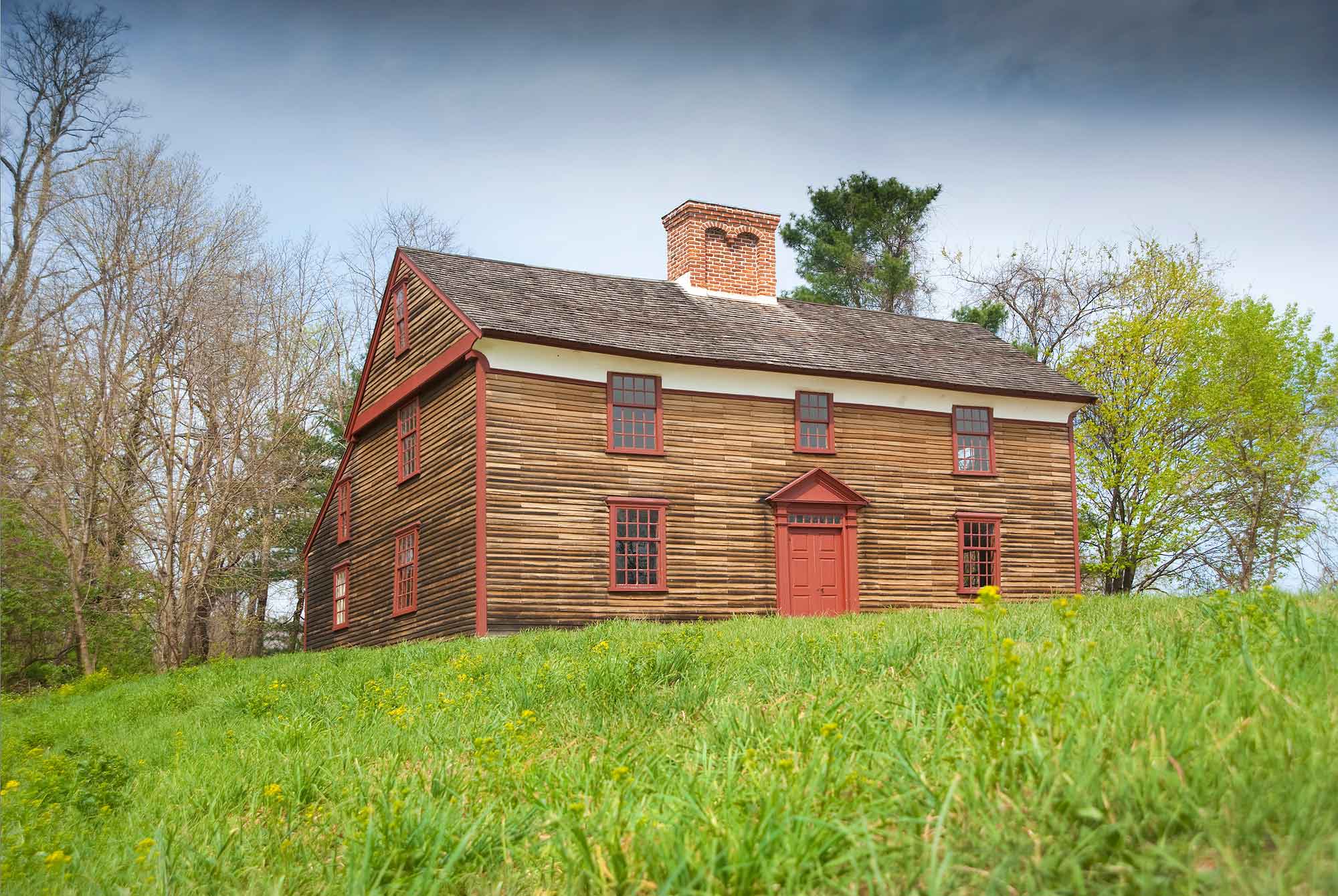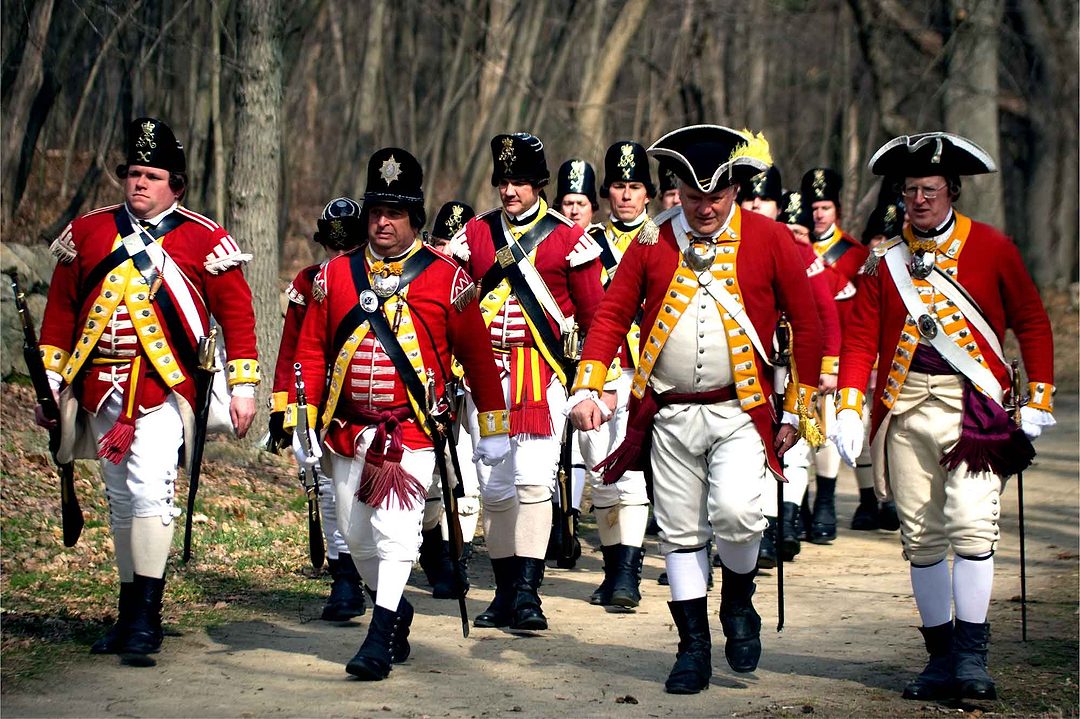 Historians have often overlooked a critical aspect of the Battles of Lexington and Concord; the psychological and physical impact on the civilian populace. Hours before the engagement, at approximately six o’clock in the evening of April 18, 1775, Lexington resident Solomon Brown observed nine British officers riding slowly along the country road before him. The night was not very cold, yet Brown noted that each officer was wearing a heavy wool blue overcoat under which he could see the shape of their pistols. Taken aback, Brown passed the officers and galloped towards Lexington. He rode directly to Munroe’s Tavern, informing Sergeant William Munroe of what he had observed.
Historians have often overlooked a critical aspect of the Battles of Lexington and Concord; the psychological and physical impact on the civilian populace. Hours before the engagement, at approximately six o’clock in the evening of April 18, 1775, Lexington resident Solomon Brown observed nine British officers riding slowly along the country road before him. The night was not very cold, yet Brown noted that each officer was wearing a heavy wool blue overcoat under which he could see the shape of their pistols. Taken aback, Brown passed the officers and galloped towards Lexington. He rode directly to Munroe’s Tavern, informing Sergeant William Munroe of what he had observed.
At eleven o’clock, alarm rider Paul Revere arrived in Lexington, warning of a military expedition advancing from Boston. A second alarm rider, William Dawes, came approximately an hour later and confirmed Revere’s report. As a result, Captain John Parker ordered his militia company to assemble. When Lexington’s alarm bell began to toll as a call to arms, most residents recognized that a hostile military force was marching directly toward them. With the possibility of the town being subjected to plunder and destruction, a panic set in. Many who lived along the Bay Road (present-day Massachusetts Avenue and Route 2A) prepared to evacuate. Sergeant William Munroe’s wife, Anna Munroe, started baking bread for her husband. Later she confessed, “I mixed my bread last night with tears coming, for I feared I should have no husband when the next mixing came.”1

The Captain William Smith House, Minute Man National Historical Park
| ©istock.com/maudib
The panic quickly spread to neighboring communities. The Reverend William Gordon of Roxbury noted that colonists from Lexington, Lincoln, and Concord who lived along the Bay Road fled for safety. In Lincoln, Mary Hoar Farrar and her family ran away to a retired piece of forest land called “Oakey Bottom.” While hiding, she and her family occasionally emerged from the woods to see whether the British had burned her homestead. Martha Moulton of Concord recalled that upon receiving word of the regulars advancing on the town, many women and children gathered whatever personal belongings they could carry and fled either to nearby woods or towns.
For some women, the flight was arduous. Lexington’s Sarah Marrett, Amity Pierce, Sarah Reed, and Betty White were recovering, having given birth over the past month. Three other women from the same town, Dorcus Parker, Elizabeth Estabrook, and Lydia Harrington, were all over eight months pregnant. In Menotomy, Hannah Adams and Hannah Bradish had each given birth less than two weeks earlier and were bedridden. Unlike their Lexington counterparts, the two Hannahs were too weak to flee and, later that same day, were caught in the middle of a bloody firefight as British and Massachusetts soldiers fought through their village.
Upon hearing the exchange of musketry from the Battle of Lexington, Lydia Parker sent her eldest son to the top of a nearby hill to see whether the British regulars were moving to plunder Lexington homes.2 Once confident the British column had moved on to Concord, many returned to the town common. Upon arrival, they discovered that over two hundred men from Woburn’s militia and minuteman companies had arrived and were assisting in treating the wounded. By mid-morning, residents of Lexington buried their dead in a makeshift grave.
After the fight at Concord’s North Bridge, many residents from Lincoln, Lexington, Menotomy, and Cambridge correctly concluded that the British regulars would be marching back through their respective towns again and prepared to flee to safety for a second time. At the height of the flight, one witness recalled the roads clogged with child and female refugees weeping.3 Another witness described homes far away from the fight, overwhelmed by women and infants wailing in despair and unsure of the fate of their spouses or male relatives who were off fighting the regulars.

The Battle of Concord
| The Everett Collection/shutterstock.com
Unfortunately, some families waited until the last moment to escape and collided with the British army. Lincoln’s Mary Hartwell would later recall how she trembled with fear as the retreating regulars approached her home wild with rage as they fired towards the house. Lexington’s Anna Munroe, daughter of William and Anna, was five years old when the Battles of Lexington and Concord took place. After returning to Munroe Tavern following the first evacuation, the family was forced to flee again. According to her nineteenth-century account, Anna “could remember seeing the men in red coats coming toward the house and how frightened her mother was when they ran from the house. That was all she could remember, but her mother told her of her very unhappy afternoon. She held Anna by the hand, brother William by her side, and baby Sally in her arms . . . She could hear the cannon firing over her head on the hill. She could smell the smoke of the three buildings which the British burned between here and the center of Lexington.”4
Many Lexington, Menotomy, and Cambridge residents watched in horror from the safety of distant hills as their homes were burned, destroyed, or looted by regulars retreating through their town. Some were horrified at the extent of the damage. A “Mrs. Muzzy” returned home to find that British soldiers had broken her mirror and valuable crockery, fired bullets into an interior wall, and left the floorboards smeared with blood. When Anna Munroe returned to her family tavern, she quickly noted that the retreating soldiers had eaten her freshly baked bread, broken into her supplies, and consumed all the alcohol in the shop. She also discovered the soldiers had piled up her furniture, including a mahogany table, and set it on fire in an attempt to burn the tavern down.
In the months after the fight of April 19, 1775, residents along the Bay Road started to compile a running list of lost, stolen, or destroyed property. According to claims submitted to the Massachusetts Provincial Congress and the Massachusetts legislature, the approximate damage to civilian real and personal property equaled over one million dollars in 2023 currency value.
His Majesty’s forces never again marched on the Massachusetts countryside. The departure of British troops from Boston in 1776 did little to calm the nerves of the civilian population. For the remainder of the war, residents and government officials worried that the regulars would return, seeking revenge. As a result, the state legislature and local communities drafted contingent evacuation plans calling for women and children to flee to the safety of remote areas of Massachusetts or neighboring states in the event of an attack. Fortunately, the threat of invasion never came to fruition. However, well into the early nineteenth-century, surviving women and children shared their harrowing tales of escaping the British army’s wrath on April 19, 1775.
1 Carrie E. Bacheller, Munroe Tavern: The Custodian’s Story, (Lexington, Massachusetts: Lexington Historical Society, date unknown), p. 6-7. 2 A. Bradford Smith, “Kite End,” Lexington Historical Society Proceedings, (Lexington, Massachusetts: Lexington Historical Society, 1891) Vol. 2, p. 102. 3 Michael J. Canavan, Canavan Papers, (Lexington, Massachusetts: Self Published, 1910), Vol. 1, p. 136. 4 Bacheller, Munroe Tavern, p. 6-7.


